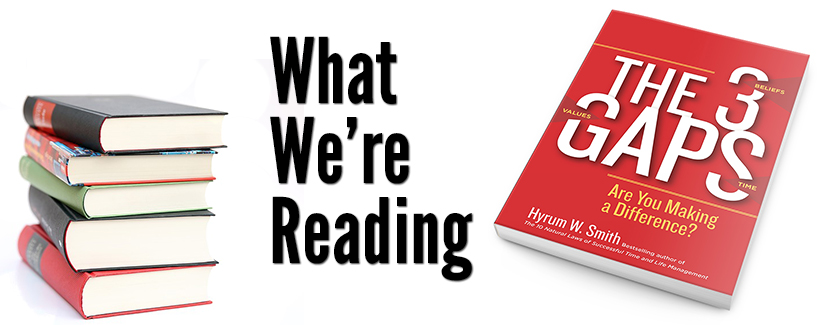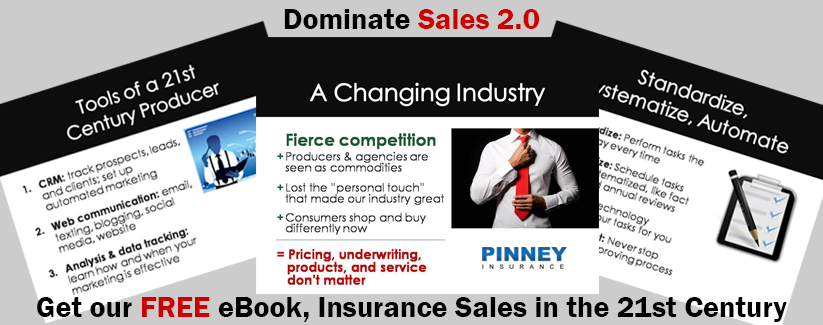
Our focus topic this March is retirement planning, and The 3 Gaps by Hyrum W. Smith seemed like a natural fit. It’s about three key ways we as advisors need to get our lives together before we can help others. Why is this important? Smith uses the familiar analogy of the airline safety drill, where you’re told to put on your own oxygen mask before helping anyone else with theirs. On a smaller scale, this idea is totally in line with retirement planning. Unless we’ve done it ourselves, how can we guide our clients through the process? Unless we've been through the financial and emotional pitfalls, how can we keep our clients from falling into them?
Everyone on the planet has to deal with some pain. Regardless of that fact, misery does not have to be a part of it. If you choose misery, you’re done…The end result of misery is hopelessness.
Let’s step back and look at the big picture for a minute. The book’s main idea is that our stress and unhappiness stem from the gap between the people we are and the people we want to be. If we can identify these gaps and work to close them, we’ll be living a more authentic life in line with our needs and values, which decreases the amount of stress and pain in our lives. Sounds good, right?
Okay, now that we’ve got the big picture, let's get more specific. What does this have to do with being an advisor? The 3 gaps Smith describes are helpful for understanding how to step back from a situation and evaluate it calmly – something we all need to do when it comes to making big life choices, including retirement plans.
We have to move on, or we will not survive. Those early pioneers made a difference for their future generations because they refused to quit.
To help your clients look at situations that seem confusing or frightening, you have to guide them through it. This requires more than product knowledge or even market knowledge. It requires psychological insight. But you don’t have to go get a degree or bring in a specialist. You can use the techniques Smith outlines in his book to help step yourself – and then your clients – through the process.
Here’s one more tidbit before we get started. Does the name Hyrum Smith sound familiar? If so, it's because he's a co-founder of Franklin Covey, along with Stephen R. Covey.
The 3 Gaps
The 3 gaps Smith sees are as follows:
Beliefs Gap. This refers to the gap between what you believe is true and what’s actually true. Today, you’re looking at the world through what Smith calls a “belief window.” That window uses your beliefs, some rational and some irrational, to alter what you see of the world – and how you react to it. The example he uses is of a person who is afraid of dogs. If the person who’s afraid sees a Doberman in a yard, they’re likely to run away. But another person who doesn’t have a fear of dogs just sees a cute animal. In either case, the dog is the same. The only difference is in how the two people see it – through their “belief windows.” The key is to identify what beliefs are present and how they might be affecting what you see.
Values Gap. This refers to the gap between what we value most in life and where we spent most of our time and energy. When these two are very far apart, chances are you’re going to be unmotivated, if not downright upset most of the time. If you’re having trouble identifying what you value most, Smith suggests you picture an I-beam, six inches wide and hanging a hundred feet off the ground. What could get you to cross that beam in a storm? The things you’d cross the beam for are your governing values, whether that’s family, friends, money, your company, etc.
Time Gap. This refers to the gap between the time we have and the time we need to achieve our goals. Oftentimes, that gap isn’t as wide as we think it is. It seems wide because we don’t understand the concept of event control, the power of daily planning, or the discipline of managing that planning. In many cases, we haven’t set reasonable goals, or thought long and hard about how to achieve them. It seems like we have no time, but in reality, we haven’t planned properly. One of the best ways to close this gap is to spend 15 minutes at the beginning of every day planning what you want to achieve that day. As you make a list of tasks and goals, you have the chance to prioritize what reflects the values you identified above. Are those values demonstrated in your task list?
Closing the Gaps
Smith believes there are 4 key steps to closing your personal gaps:
- Admit your own behavior is causing you pain. It’s easy to sit back and think, “I’m not getting what I want out of life.” It’s a lot harder to pinpoint the cause of that dissatisfaction – especially if you're the cause. Your first step is to identify ways you and your specific behavior patterns are causing yourself unhappiness.
- Admit you need to change. Once you’ve identified the behavior that’s causing you stress or pain, it’s not hard to admit you need to change. You don't want to feel stressed and unfulfilled, do you? Of course not.
- Ask yourself why the behavior began in the first place. It'll be easier to change the unwanted behavior if you know why it’s happening. According to Smith, there’s usually a belief at the bottom of that behavior. You need to identify it and figure out why you have that belief before you can change it.
- Create an alternate belief and implement it. Once you know where the unhelpful belief stems from, work to replace it. To go back to the dog example, someone who is afraid of dogs would work to replace a belief that “dogs are scary” with “most dogs are friendly.” To implement that belief, they might challenge themselves to get to know a friend’s dog.
Using the Control Model
We put beliefs on our windows because we believe that they are true and that by following them we will meet our needs over time.
As you confront situations in life, Smith also suggests you consider how much control you have over those situations. He calls this the “Control Model.” For example, you can’t control things like death, taxes, traffic, or weather. They probably make you feel stressed or anxious, but you can’t personally change them. Letting yourself feel negative feelings isn’t going to help. Let go of the negativity when you can’t control any of the outcome. Spend that time and energy working on closing the gaps you can control.
In terms of retirement planning, the obvious example here is the stock market. Many clients are going to worry about volatility. There are two approaches you can step them through: accept volatility as a possible outcome you can’t control when you invest in the stock market, or minimize volatility by seeking other options, like indexed universal life policies that offer downside protection.
…I have come to realize that when it comes to time, the only difference between now and a hundred years ago is that we have more options in how we use our time.
Some clients may think they can control volatility by making smart stock trades or micromanaging their accounts. To help them think this through, talk them through the I-beam exercise. Do they truly enjoy the challenge of managing their retirement accounts? Would they walk across a swaying I-beam for the chance to manage their accounts? Or is there something else they’d rather spend their time and energy on? These kinds of visual exercises can help your clients make better decisions based on what they really want, not what they feel they should be doing or what others are doing.
If you're liking the 3 gaps mindset, you're not alone. The book has become an entire website and cottage industry. You can check it out at 3gaps.com.
Even if the mindset doesn’t resonate with you, remember that the I-beam and "belief window" exercises can be helpful to step clients through their ideas about money and retirement planning.

